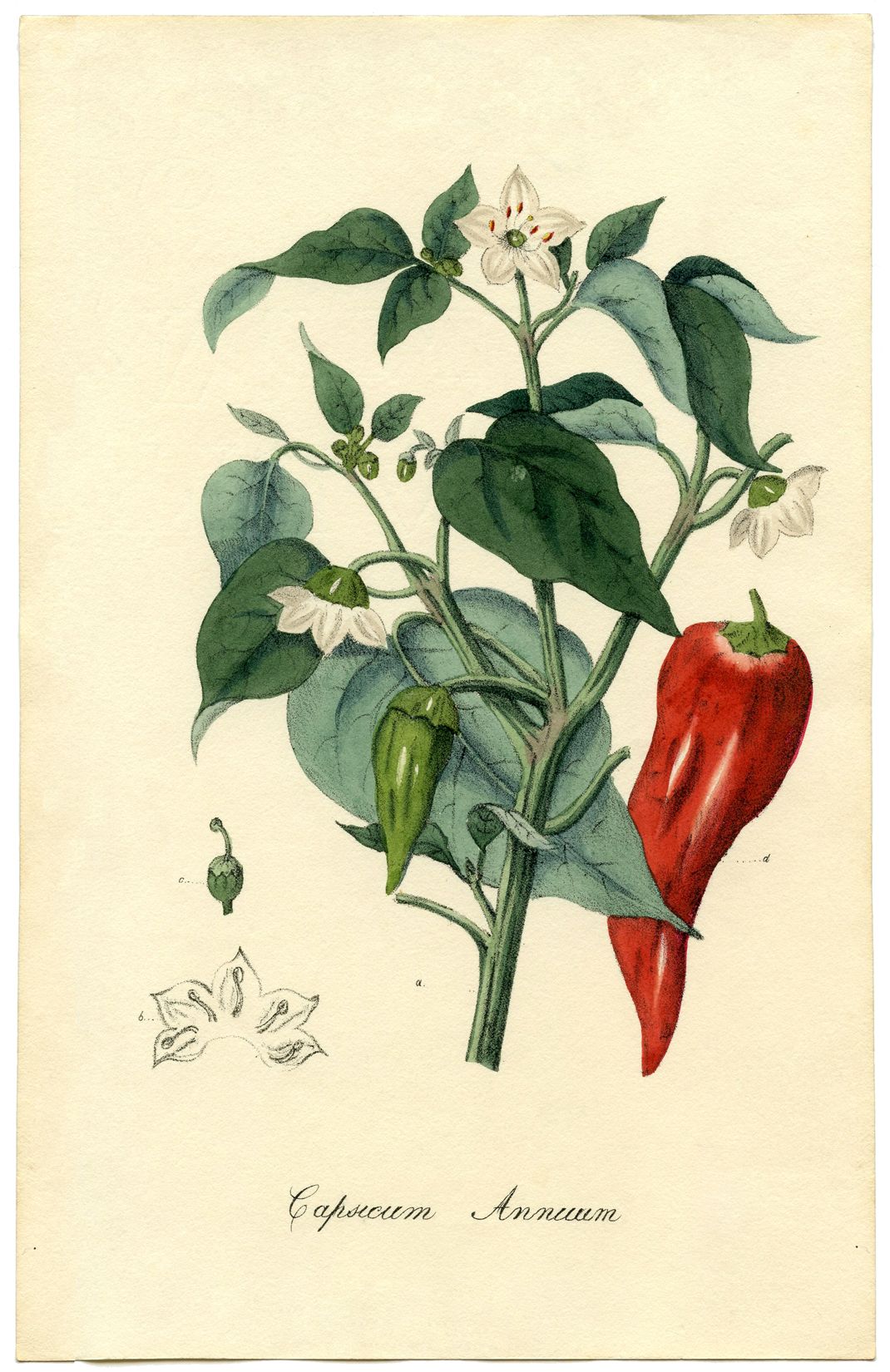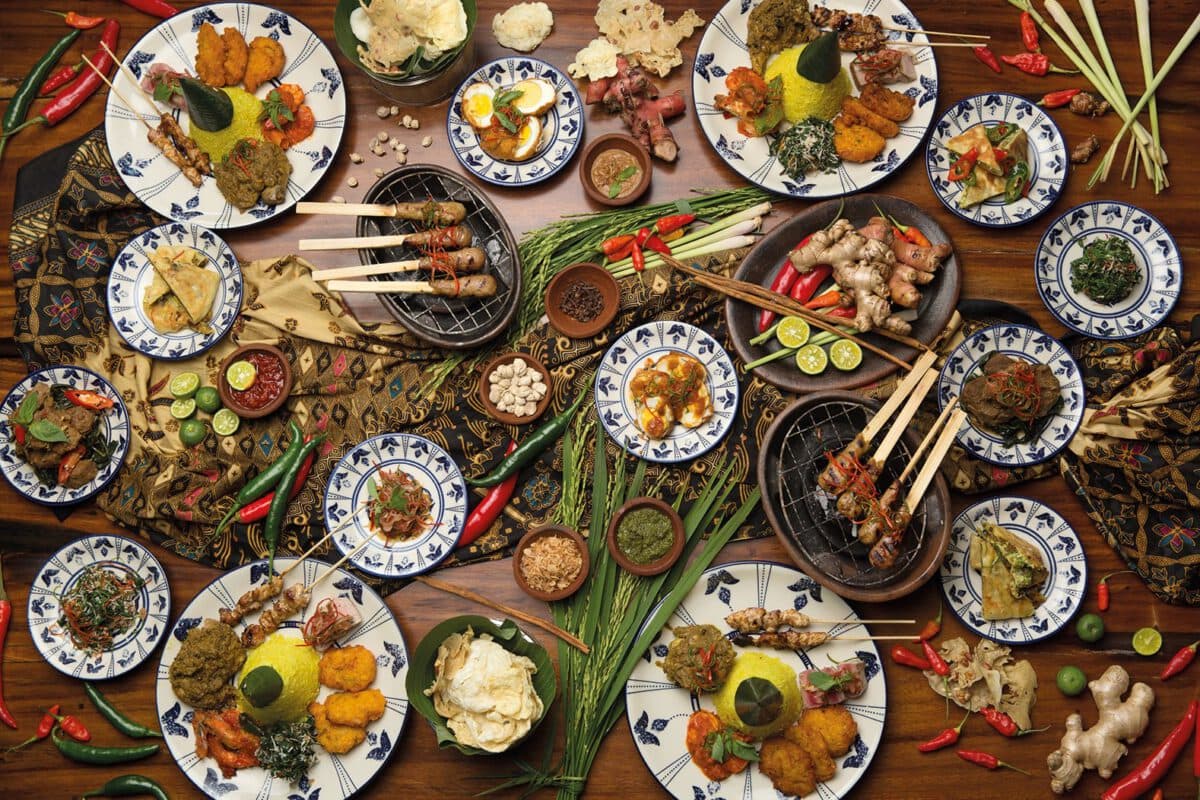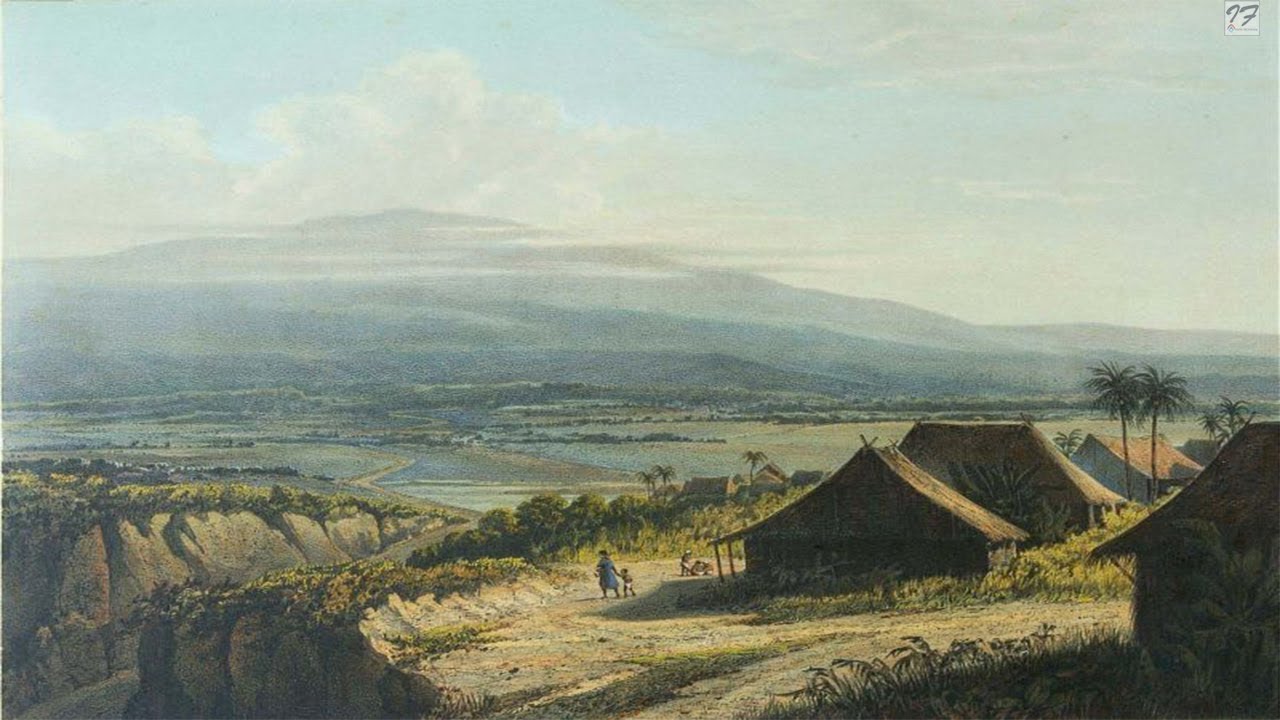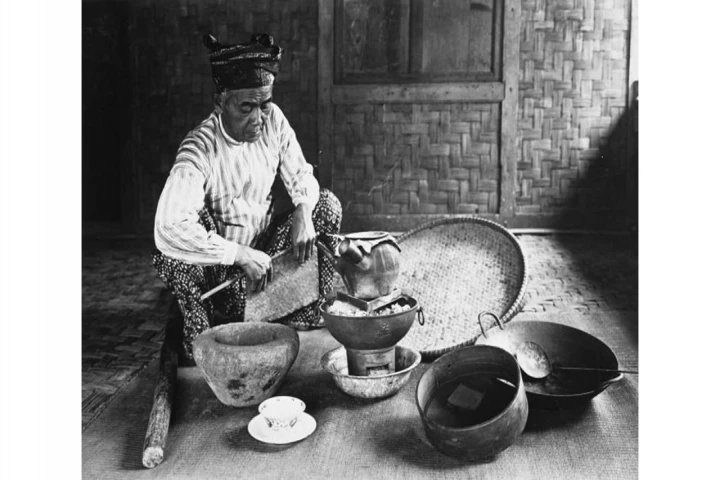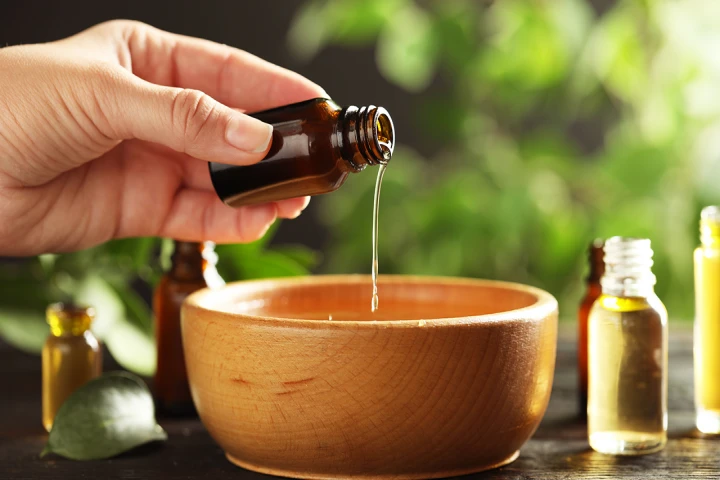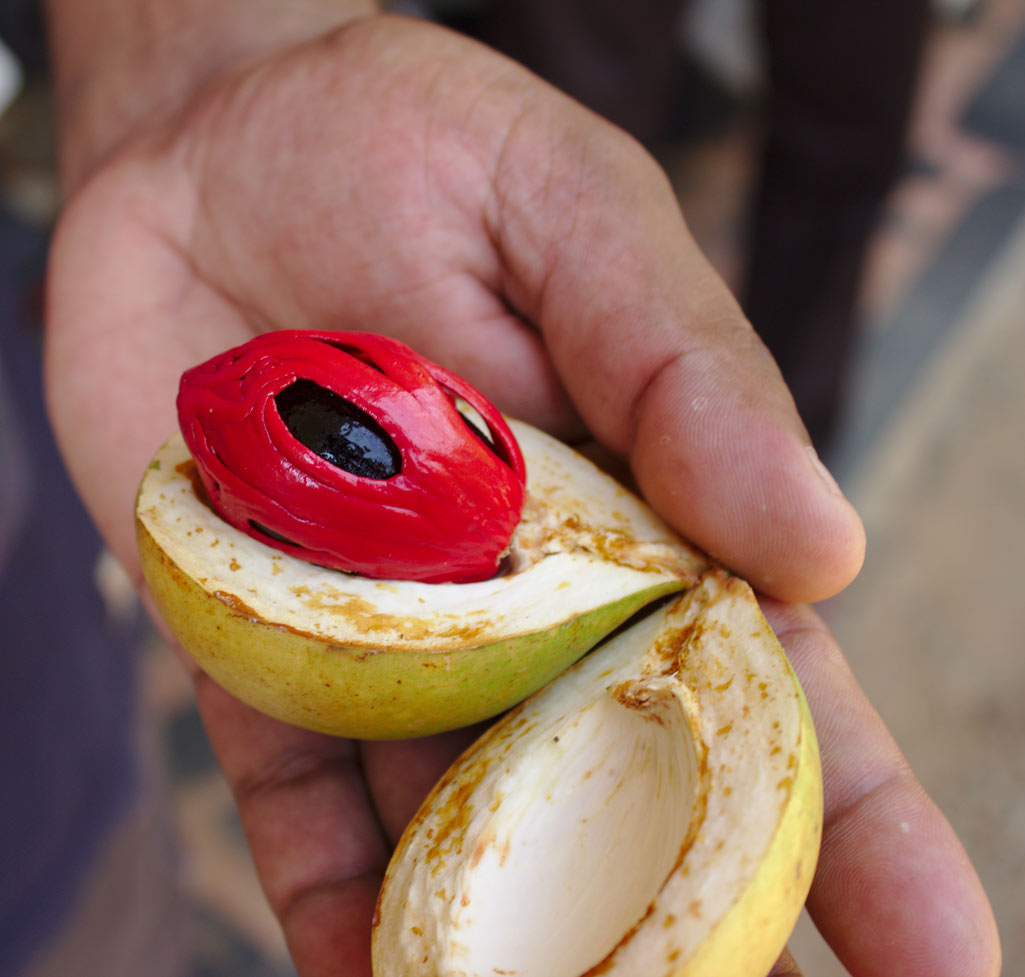
The fame that Banda Islands’ nutmeg got wasn’t limited only to its land. Nutmeg played a significant role in creating a history in the form of the routes taken by the sailors we know as the Spice Routes. We can find the trace and impact that followed the popularity of nutmeg in the books, both the history books and fiction written by various historians and authors.
It’s not surprising, for nutmeg and mace—which the Bandanese call the golden fruits—had long become magnets for people around the world to sail across the oceans.
The name golden fruit it got from Bandanese hundreds of years ago wasn’t a metaphor. The interpretation is quite literal, for the fruit will turn to golden yellow when it reaches half of its age. During this phase, the fruit isn’t allowed to pick. It’s ready to harvest when the golden yellow turns to reddish yellow, and the mace (the part that covers and is attached to the nutmeg) turns to red. It has become a spotlight for a few authors that recorded it in their works.
In his book Suma Oriental (1944), Tom Pires even quoted a proverb from Malaccan traders on nutmeg that was believed to be a gift from God for creating this kind of spice. Not to exaggerate, but nutmeg indeed brought that much influence.
“God created Maluku for cloves, Banda for nutmeg, and Timor for sandalwood.”
Further, Banda spices also triggered western visitors who were fascinated by the spices to form poetic imaginations. One example was Bartholomew Leonardo de Argensola, a historian and poet from the 17th century who wrote about nutmeg trees based on the reports of the Portuguese.
“They (nutmeg) are like the European pear trees, and their fruit resembles pairs, or rather in roundness the Melocotones. When the Nutmegs blossom, they spread a cordial fragrance; by degrees, they lose their Native Green, which is original in all vegetables; and then succeeds a blew, intermixed with grey, cherry-colour, and pale gold colour, as we see in the rainbow, though not in that regular division, but spots like the Jaspar Stone. Infinite numbers of parrots, and other birds of various plumage, soft delightful to behold, come to fit upon the branches, attracted by the sweet odour. The nuts, when dry, cast off the shell it grows covered with, and is the mace, within which is a white kernel, not so sharp in taste as the nut, and when dry is converted into its substance. Of this mace, which is hot and dry in the second degree, and within the third, the Bandanese make a most precious oil to cure all distempers in the nerves, and aches caused by cold. Of these nuts they choose the freshest, weightiest, fattest, juiciest, and without any hole. With them they cure, or correct stinking breath, clear the eyes, comfort the stomach, liver, and spleen, and digest meat. They are a remedy against many other distempers, and serve to add outward luster to the face.”
An American Historian, Willard A. Hanna also perpetuated Banda Islands’ nutmeg in his work in the form of praises entitled Banda Islands, Colonialism and Its Aftermath in the Nutmeg Islands (1983). Here’s the quote:
“The nutmeg is a very beautiful tree; when of the full size it is about twenty-five or thirty high, and, if well-formed, should have a diameter from the extremes of its lower branches of little less. It is thickly covered with polished dark green leaves (like those of the bay tree at home), which continue thick and fresh all year round. […] Overall, there aren’t many other trees which seem to be more beautiful in shape, lush leaves, flower, and fruit than the healthy nutmeg.”
Hanna Rambe, an Indonesian historical fiction writer, wrote a novel that shows Banda Islands as the leading nutmeg producer. In her book Mirah of Banda (2010), she created an appealing description of the nutmeg harvesting in the Banda Islands and the remaining colonial brutality. Further, by her character Wendy, Hanna also succeeded in depicting the innocence of an Australian who was fascinated by the nutmeg tree and its golden mace.
“Wendy was mesmerized, standing before a tall nutmeg tree. On a short stem, she spotted several nutmegs, golden in the sunlight. She reached out her hand.
“Don’t pick them,” Jack told her. “They’re not ripe.”
“I don’t want to pick them, just to feel their skin.”
It was a fine skin, velvety. She thought of the peachers growing in her garden at home in Cairns, only these were egg-shaped.”
More than the astonishment on nutmeg, Utuy Tatang Sontani, an Indonesian writer and playwright perpetuated Bandaneses’ Dapur Pala in his historical novel Tambera (1949). Dapur pala is nutmeg storage in the plantation, and it also functions as drainage and evaporation. Here’s the quotation.
“Setelah jurubahasa menyampaikan persetujuan orang-orang Belanda itu kepada Imbata, setelah Imbata menyampaikan kepada penduduk pulau, pertukaran pun lantas dilangsungkan. Semua penduduk pulau yang ada mempunyai buah pala, pergi ke rumahnya atau ke kebunnya, untuk membawa simpanan pala itu ke hadapan orang-orang Belanda.”
[“After the interpreter passed the Dutch’s agreement to Imbata and after Imbata passed it to the locals, they then did the exchange. Every local who possessed nutmeg went to their houses or plantation to bring the nutmeg to the Dutch.”]
Nutmeg doesn’t merely give value to history and economics. It also impacts the literary world that the stories are covered as what has been exposed above. One thing to note is that the narration of nutmeg as a high-value spice that draws attention and arises admiration will be eternal. But we won’t stop here, for we have tons of other spices!
Text: Doni Ahmadi
Editor: Tiya Septiawati
Translator: Dhiani Probhosiwi



